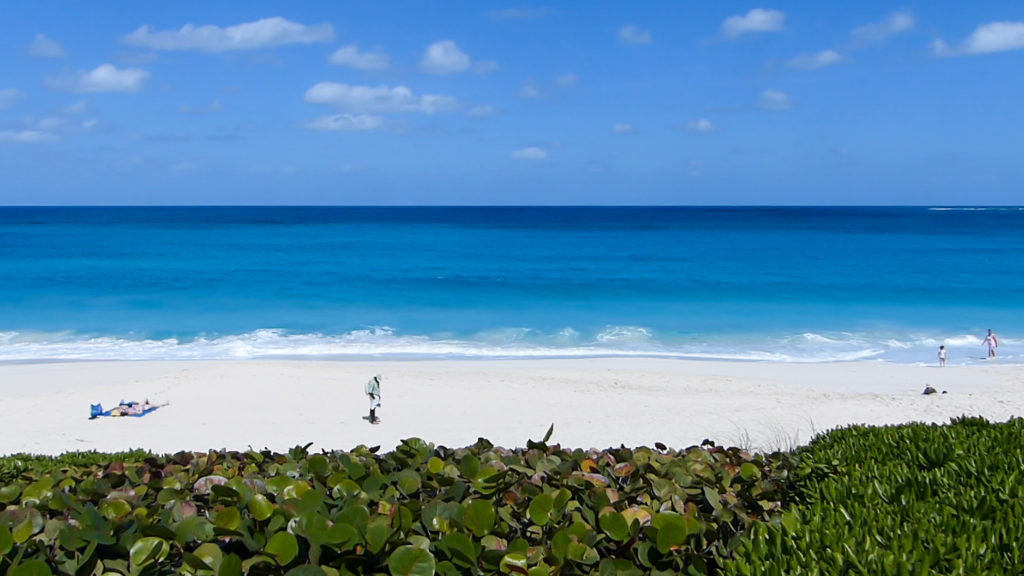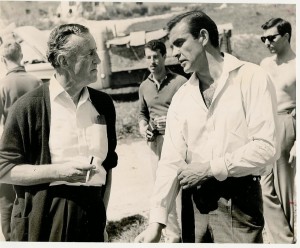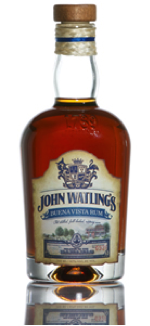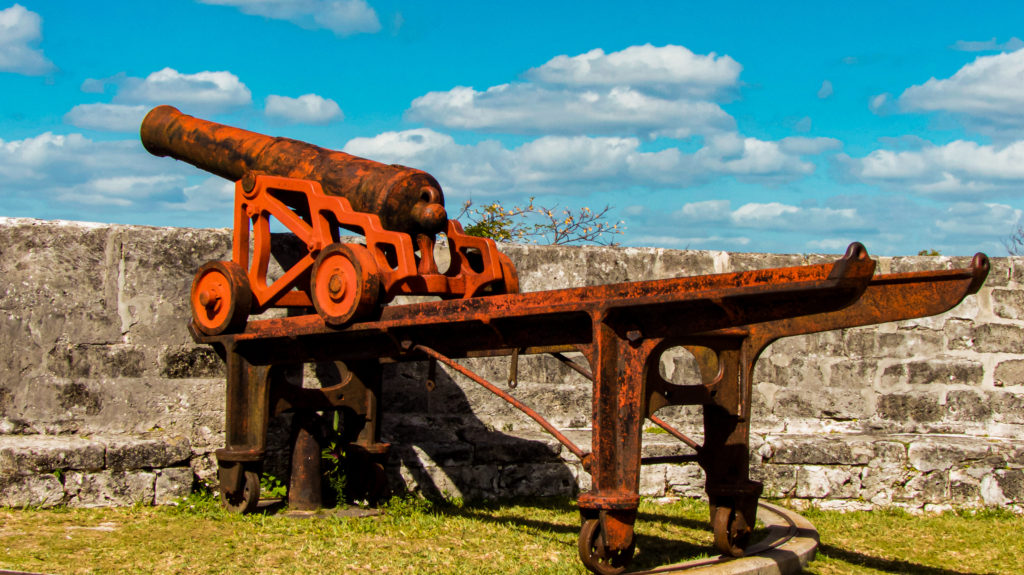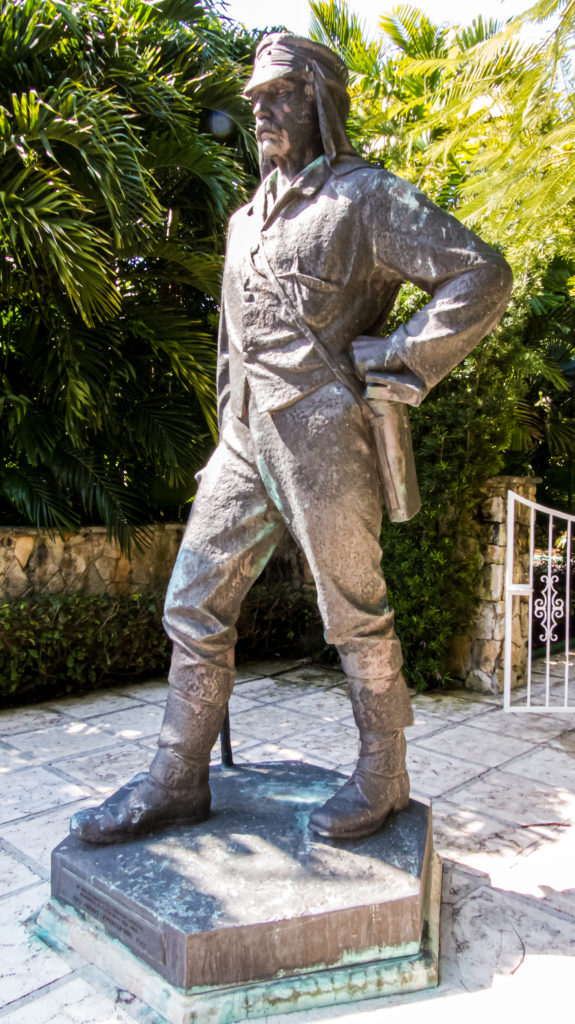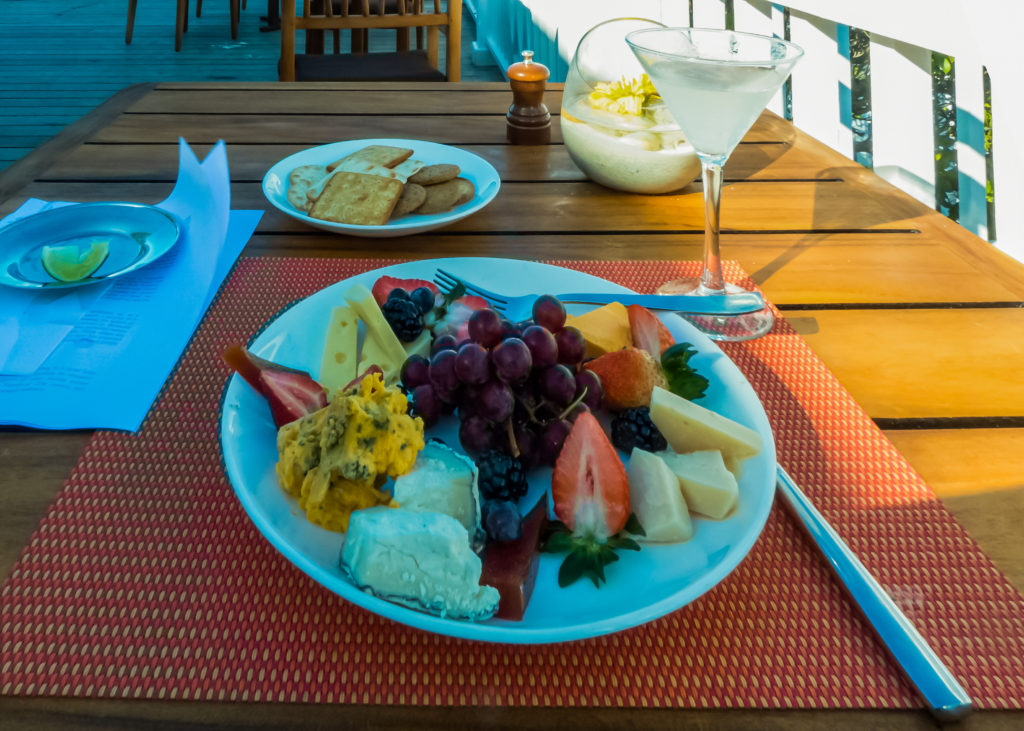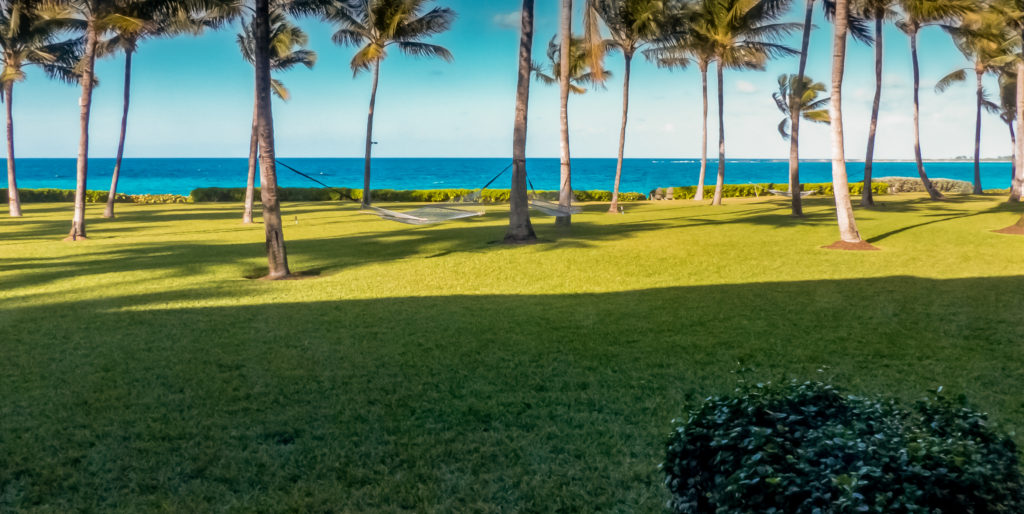A short video of the Ocean Club Beach. © Diponkar Banerjee 2015.
View from the One&Only Ocean Club, Paradise Island, The Bahamas.
Casino Royale – the Bahamas Connection
There is a scene in the James Bond movie Casino Royale,
the first and, I think, the best of the movie series in which Daniel Craig stars as Bond, in which he breaks into M’s apartment in London and, using her laptop computer and her password, tracks down a cell phone text message sent to a bomb-maker in Madagascar. He discovers it to have originated from the (One&Only) Ocean Club, Paradise Island, in The Bahamas.
After a terse conversation with M, who is surprised and not at all pleased to see him seated nonchalantly in her apartment, Bond heads off to Paradise Island, and drives to the Ocean Club to investigate further (in a Ford, no less! Later he makes up for it by winning a 1964 vintage Aston Martin DB5 (quite underpowered by today’s standards) at the casino from villain Alex Dimitrios, and uses it to get Dimitrios’s wife Solange to accompany him to his oceanfront villa for an evening tryst over Bollinger champagne
and Beluga caviar. Aston Martin, when the movie was made, was owned by Ford, which might explain why Bond was driving a Ford after he first landed in The Bahamas, a technique called product placement). Th

Not surprisingly, a total of 7 Bond movies include scenes shot in the Bahamas. A list can be found here. 

The book Casino Royale was written by Ian Fleming in 1952, the first of several books describing the exploits of an MI6 British secret service agent, James Bond aka 007.
Here is a photograph of Ian Fleming and the original James Bond actor, Sean Connery, now Sir Thomas Sean Connery.
The first Casino Royale movie produced in 1967, starring Peter Sellers and a host of other big name actors, such as Orson Welles (!) was pitched as a comedy; entirely forgettable I thought when I watched it in Kampala, Uganda in 1968.

Peter Sellers, Ursula Andress and Orson Welles in Casino Royale
Interestingly, in the 2006 version starring Daniel Craig, there is a scene allegedly shot in Mbale, Uganda, which brought back memories of my childhood in Uganda. I later discovered that the Mbale scene had been shot in Britain (Black Park in Buckinghamshire). So much for nostalgia.
When, this year, I needed a well-deserved break from work-related and health-related stress, I thought: “Why not stay at the Ocean Club and experience the most relaxed atmosphere I could imagine, surrounded by the beauty of the Bahamas?”
I started to do some research on the web while sipping a Vesper martini. This cocktail was invented by Bond on the spot at the Casino Royale when he instructs the bartender: “Three measures of Gordon’s, one of vodka, half a measure of Kina Lillet. Shake it very well until it’s ice-cold, then add a large thin slice of lemon peel. Got it?”
Bond later named the cocktail as a Vesper martini once he got to know the main female character, Vesper Lynd, an MI6 accountant, no less).
There is a wealth of information on The Bahamas on the web. I came across some stunning photographs taken by NASA astronauts.
![Photo by Chris Hadfield, Astronaut who said in an interview: "The most beautiful [view] to me are the Bahamas, the vast glowing reefs of every shade of blue that exists". http://www.bbc.com/news/technology-21497468](https://savvyadventurer.com/wp-content/uploads/2015/03/Hadfield.png)
Photo by Chris Hadfield, Astronaut who said in an interview: “The most beautiful [view] to me are the Bahamas, the vast glowing reefs of every shade of blue that exists”. http://www.bbc.com/news/technology-21497468

Astronaut Scott Kelly also tweeted a photo of the Bahamas from outer space. His comment about the Bahamas was: “The most beautiful place [visible] from space.” http://islandmix.com/blog/astronaut-shines-light-bahamas-beauty-outer-space-sharing-photo-twitter/
The Bahamas played a pivotal role in the discovery of the Americas, the subsequent exploitation of the indigenous people and the massive slave trade that enabled colonization of the North American continent and the development of a nation that eventually became the United States of America. What started out as a frivolous and trivial pastime for me on the Bahamas connection with the character James Bond in Casino Royale, soon became a lesson in history that I have tried to summarize in this post.
When you visit the Bahamas, you would be impressed by the friendly and hospitable Bahamians, proud descendants of African slaves and a testimony to the resilience of this most oppressed segment of the human race. The irony is that we are all descendants of modern humans who evolved out of Africa a mere 150,000 years ago, yet much of the world continues to treat Africans as subhumans to be exploited in more ways than one.
History of the Bahamas
The Commonwealth of The Bahamas is a nation of 700 islands, uninhabited cays and “large rocks”, covering 258,998 sq. km in the Atlantic Ocean. The current population is just over 350,000.
Paradise Lost
The Spanish term for a “shallow sea”, “baha mar” is the origin of the name “Bahamas”. The original inhabitants of the Bahamas were the Lucayan “Indians”. The Lucayans were a branch of the Arawakan speaking Taíno of the Greater Antilles and are thought to have migrated to the Bahamas in dugout canoes between 500 and 800 AD from islands currently known as Hispaniola and Cuba.
The Lucayans were described as “handsome, graceful, well proportioned, gentle, generous and peaceful, and usually almost completely naked”.
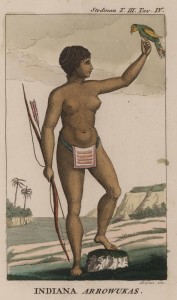
Arawak woman by John Gabriel Stedman.
Italian born historian Peter Martyr d’Anghiera remarked that the Lucayan women were so beautiful that men from “other countries” moved to the islands to be near them.
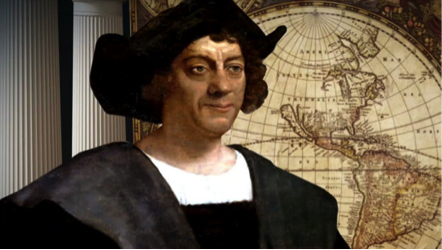
Christopher Columbus
Lucayan numbers grew to 40,000 but they were soon decimated by the Spanish slave trade that began after Italian explorer Christopher Columbus, funded by the Spanish Monarchy, Ferdinand of Aragon and Isabella of Castile, “discovered America” when his ships landed on October 12, 1492, at the island Guanahani, which the Spanish renamed as San Salvador. Truly “Paradise Lost”.
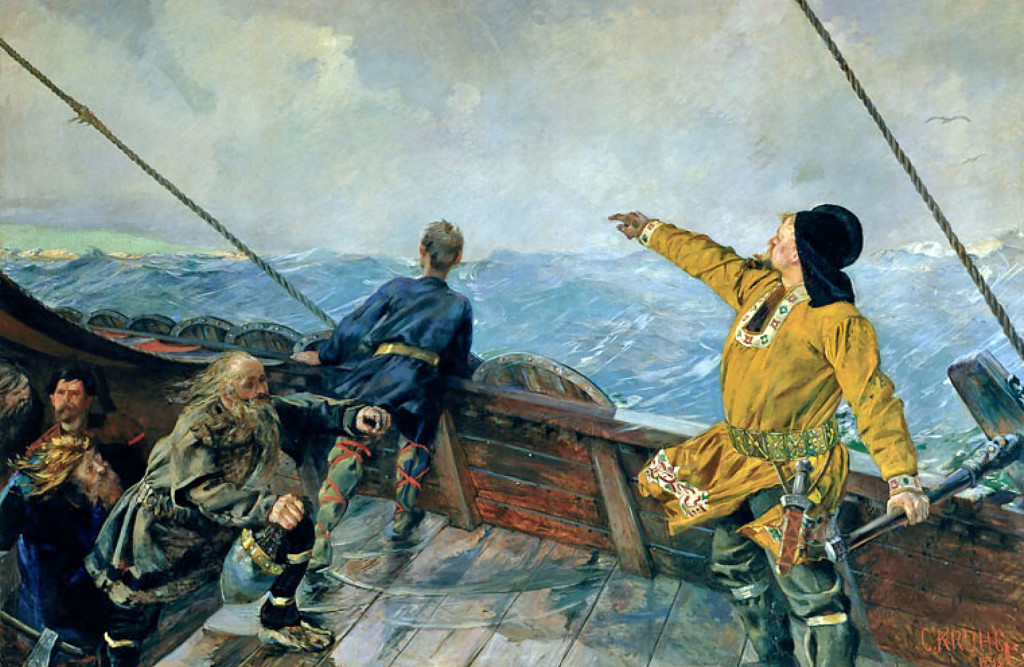
“Leif Erikson discovers America” by Christian Krogh (1893)
Actually, Icelander Leif Erikson , a Norse Viking, on his way to Greenland from Norway to convert the Greenland Vikings to Christianity, was blown off course, landed in what is now believed to be Newfoundland (which he called “Vinland”), Canada, around 1000 AD, 5 centuries before Columbus reached the Caribbean, and is considered to be the first European to have reached the Americas.
The United States remembers Columbus, who never actually set foot on the North American mainland, with parades and a federal holiday (In April 1934, as a result of lobbying by the Knights of Columbus and New York City Italian leader Generoso Pope, Congress and the then U.S. President Franklin Delano Roosevelt proclaimed October 12 a federal holiday under the name Columbus Day), but Leif Eriksson Day on October 9 receives little attention, even in Canada.
In the 17th century, Columbus’s landing point, San Salvador, was settled by a British pirate, John Watling, who named it Watlings Island. You can research John Watling while drinking an excellent shot of John Watling’s Buena Vista rum on the rocks!
Slavery and Depopulation of the Bahamas
In 1509 Ferdinand II of Aragon decreed that “Indians” be imported from nearby islands to make up for the slave population losses in Hispaniola. This led to the Spanish capturing Lucayans in the Bahamas for use as slaves in Hispaniola. The initial value of a Lucayan slave was four gold pesos. It was later discovered that Lucayans were expert divers (for conchs) and therefore could be exploited as pearl divers; the price per slave then rose to gold 150 pesos. This led to 40,000 Lucayans being captured and sold, essentially decimating the population of the Bahamas by 1513. Later, American geographer Carl O. Sauer described Ponce de León‘s 1513 “discovery” of Florida as “an extension of slave hunting beyond the empty islands.” The Spanish evacuated the remaining Lucayans to Hispaniola in 1520. They could find only eleven in all of the Bahamas. Since then the Bahamas remained uninhabited for 130 years.
The Spanish Interest in the Bahamas
The Spanish were only interested in the Lucayans as a source of slave labour. Columbus himself captured a few Lucayans to take back to Spain.
Amerigo Vespucci, another Italian explorer, after whom America got its name, was also an avid slaver, taking 232 Lucayans to Spain as slaves in 1500. His early accounts of his voyages are now considered forgeries.
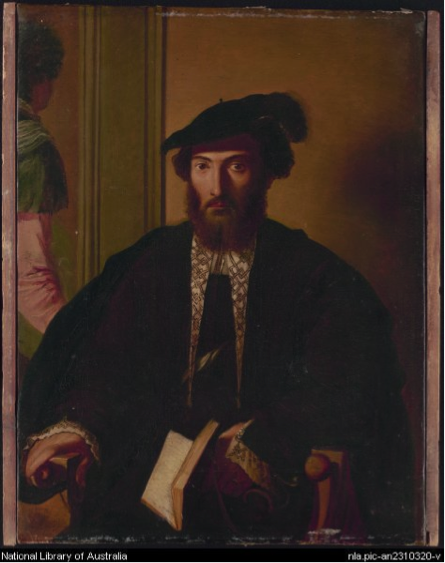
Amerigo Vespucci
The current Bahamian people are the descendants of African slaves.
Most of the African slaves who were brought to The Bahamas came from Central Africa (37,000), the Bight of Biafra (21,000), Senegambia (a loose confederation in the late 20th century between the West African countries of Senegal and its neighbour the Gambia, which is almost completely surrounded by Senegal. The confederation was founded on 1 February 1982 following an agreement between the two countries signed on 12 December 1981. It was intended to promote cooperation between the two countries, but was dissolved by Senegal on 30 September 1989 after the Gambia refused to move closer toward union; 800), Sierra Leone (1,180), the Windward Coast (1,030), the Gold Coast (480), and the Bight of Benin (1,040).
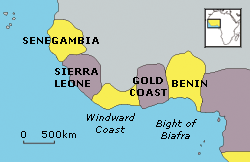
Windward Coast
Many Bahamians are also descendants of Gullah, progeny of enslaved Africans who lived in the Low country region of the U.S. states of South Carolina and Georgia, which includes both the coastal plain and the Sea Islands, imported to The Bahamas during the American Revolution. The Gullah region extended from the Cape Fear area on the coast of North Carolina south to the vicinity of Jacksonville on the coast of Florida.
The name “Cape Fear” always reminds me of the two movies with the same name, starring Robert Mitchum (1962) and Robert De Niro (1991 remake), respectively (both also starring Gregory Peck in different roles).




The Colonialists in The Bahamas
It is believed that there were attempts at colonization by people from Spain, France, Britain and other Amerindians. Abaco was chosen by the French in 1565, but the settlement did not last. They tried again in 1625. Abaco was later colonized in 1783 by Loyalists escaping from the American Revolution.
English Settlement on Eleuthera
The earliest permanent English settlement in the Bahamas occurred in 1648 on Eleuthera. This name resonates with me as it makes think of Monty Alexander’s excellent composition and rendition of the tune “Eleuthera” in his jazz album “Harlem-Kingston Express (Live at Dizzy’s Club Coca-Cola, NYC)”.
Settlers, primarily farmers from Bermuda sailed to The Bahamas and one of their two ships struck a reef at the north end of the Island of Segatoo (Columbus had chosen the name Segatoo) which they renamed Eleutheria which is the Greek word for freedom) in 1648, losing all its provisions. The other ship returned to Bermuda having failed to find the island. The group, composed of Puritans and republicans, expelled from Bermuda for refusing to swear allegiance to the Crown, called themselves ‘The Company of Adventurers for the Plantation of the Islands of Eleutheria,’ and were led by William Sayle. The name of the island is now Eleuthera. Additional settlers followed, including Europeans, slaves and former African slaves from Bermuda. Relief supplies from Virginia and New England provided minimal sustenance and the settlers struggled to survive, hampered by poor soil, fighting amongst the settlers and battles with the Spanish. Many gave up and returned to Bermuda in the mid-1650s.
The remaining settlers on Eleuthera shipped braselitto wood to Boston in gratitude to the people of Massachusetts for the support they had given to the struggling Eleutherans. The proceeds from the sale of this valuable wood were used to purchase the land for Harvard College, which eventually became part of Harvard University.
New Providence
In 1666 additional colonists from Bermuda settled on New Providence, creating the centre of population and commerce in the Bahamas. By 1670 the population of New Providence was about 500. In contrast to the Eleutherians, who were primarily farmers, the early settlers on New Providence made their living from the sea, salvaging (mainly Spanish) wrecks, making salt, and harvesting fish, turtles, conchs and ambergris. The soil on New Providence was also much more fertile than that of Eleuthera, attracting farmers from Bermuda as new settlers. However, being close to the sailing routes between Europe and the Caribbean, the Bahamas were full of ship wrecks, wrecking (marine salvage) became the most lucrative occupation available to the Bahamians. This attracted privateers (mercenaries hired by England and encouraged by Elizabeth I to attack and plunder Spanish ships so the the English navy could not be blamed for such activities (an early form of government “plausible deniability“)). Privateers with no contracts with the Crown after the end of the conflict with the Spanish turned to piracy which was not too different from what they did for the Crown. Later they were involved in blockade running during the American Civil War.
Nassau
Nassau was originally called Charles Town. Overrun by pirates (famous pirates including Sir Francis Drake and female pirates are listed here; a full list of pirates through the centuries is available here), Charles Town was burnt to the ground by the Spanish in 1684, later rebuilt and named Nassau in 1695 in honour of King William III (formerly prince of Orange-Nassau).
In 1703 Spanish and French allied forces temporarily occupied Nassau. Soon (1703 to 1718) there was no governor for the colony. By 1713, the Bahamas had become a pirate haven, with over 1,000 pirates in Nassau, outnumbering the 500 inhabitants of the town. The pirates proclaimed Nassau a pirate republic, and established themselves as “governors.”
The most famous pirates who used Nassau as their base are Charles Vane, Thomas Barrow, Benjamin Hornigold, Calico Jack Rackham, Anne Bonny (a red-headed, feisty Irish woman who left her small time pirate husband James Bonny, to be with the more successful pirate, Calico Jack Rackham) Mary Read, and Edward Teach, aka “Blackbeard“.
In 1718, the British appointed Captain Woodes Rogers, an ex-privateer, as the first Royal governor of The Bahamas. He successfully controlled the pirates, rebuilt the civil administration, and fostered normal (legal) commerce. Rogers rebuilt the fort, using personal funds. In 1720 the Spanish tried to capture Nassau but were unsuccessful.
At the time of the wars in the Thirteen Colonies of America, Nassau made enormous profits from privateering, and was able to build a new fort, install street lights and constructed over 2300 grand homes, extending the area of the town. Swamps were filled, reducing the mosquito population.
The Battle of Nassau (Raid of Nassau) (March 3–4, 1776) was a naval and amphibious assault by American forces against the port of Nassau, Bahamas, during the American Revolutionary War (the American War of Independence), considered the first cruise and one of the first actions of the newly formed Continental Navy and the Continental Marines, precursors of the United States Navy and Marine Corps. The attack was also the Marines’ first amphibious landing. Starting from Cape Henlopen, Delaware, on February 17, 1776, the fleet arrived in the Bahamas on March 1, to seize British gunpowder and munitions stockpiled in Nassau. On March 3 the marines led by Captain Rathburn seized Fort Montagu, a small 4 cannon fort at the eastern end of the Nassau harbour, but did not advance to the town, where the gunpowder was stored.
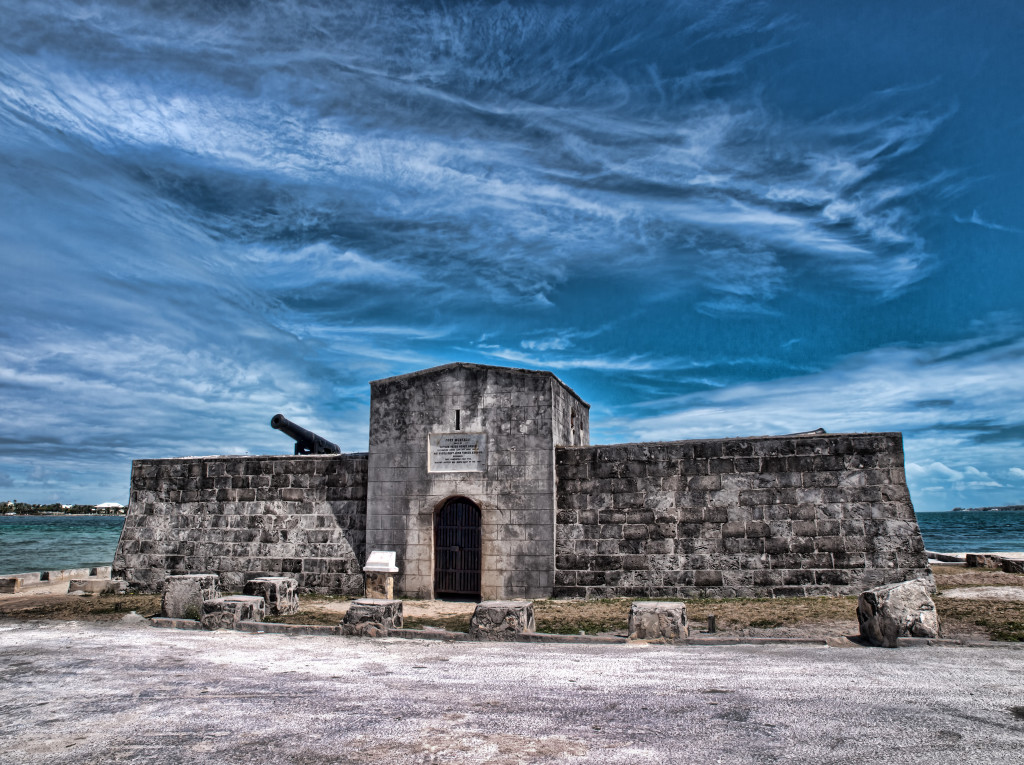
Fort Montagu. Photo by Peter Pateman, July 9 2015
That allowed Nassau’s governor to have most of the gunpowder loaded aboard ships that then sailed for St. Augustine. On March 4, the colonial marines captured the poorly defended town but had no access to most of the gun powder and munitions which had already been moved out.
The Americans remained at Nassau for two weeks, and took away the few remaining stocks of gunpowder and munitions they could find. They returned to New London, Connecticut in early April, capturing a few British supply ships on the way.
In 1782 Spain was back and captured Nassau for the last time when Don Juan de Cagigal, governor-general of Cuba, attacked New Providence with 5000 men. Andrew Deveaux, an American Loyalist who resettled on the island, set forth to recapture Nassau with 220 men and 150 muskets against a force of 600 trained soldiers. Deveaux managed to force a surrender on April 17, 1783, without a single shot being fired. That was the last time any other foreign power tried to capture Nassau.
Lord Dunmore was the governor of the colony from 1787 to 1796, overseeing the construction of Fort Charlotte and Fort Fincastle in Nassau.
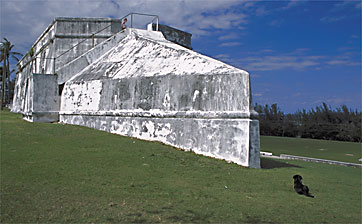
Fort Charlotte
©
©
©
©
©
During the American Civil War, Nassau served as a centre for blockade runners conducting trade with the Confederacy. Later, in the 1920s and 1930s Nassau profited from Prohibition in America.
Nassau – Wall Street of Illegal Booze
Sally J. Ling has a very interesting blog which describes the findings of a reporter, H. De Winton Wigley, who wrote: “I was hardly surprised to learn that my companion at lunch was a millionaire. This was an island of millionaires. On Bay Street, the main thoroughfare of Nassau, stand the rows of crazy old liquor stores which have brought rapid fortune to the liquor runners and bootleggers. These queer temples of fortune, built of wood, unpainted and dilapidated, are the chief feature of the capital, and have given the street the nickname “Booze Avenue.”
Some of your big distilleries have their agents over here, and these are private firms in England who are working through Nassau offices. Sometimes the London bosses are only middlemen acting between the agents on the spot and the real bosses. The fellows in Nassau don’t know much about each other’s business . . .
As for Nassau itself, it is estimated that at times there is as much as ten million dollars’ worth of whisky stored in those rickety old liquor shanties on Bay Street. And still the stuff pours in and pours out, and the bank balances grow and grow . . .”
She has published a book on rum running.
Independence
The Commonwealth of the Bahamas gained independence from Great Britain on 10 July 1973, ending 325 years of British rule (but remains part of the Commonwealth). It is one of the most politically stable countries in the world. The ultimate in civilization: The Bahamas does not have an army.
Present Day Nassau
Nassau is now the capital, largest city, and commercial centre of the Commonwealth of the Bahamas, with a population of 248,948 (2010 census), which is 70 percent of the entire population of the Bahamas (353,658). Lynden Pindling International Airport, the major airport for the Bahamas, is located about 10 miles west of Nassau city centre, and has daily flights to major cities in the United States, the Caribbean, Canada, and the United Kingdom. It is a small but efficient airport. Lucky travellers may be greeted by a local “pirate” in full pirate costume just before entering the immigration and customs hall.
Sir Lynden Oscar Pindling, (22 March 1930 – 26 August 2000), is regarded as the “Father of the Nation” of the Bahamas, having led it to majority rule on 10 January 1967 and to independence on 10 July 1973. He served as the first black premier of the Colony of the Bahama Islands from 1967 to 1969 and as Prime Minister of the Bahamas from 1969 to 1992. He was leader of the Progressive Liberal Party (PLP) from 1956 to 
Another famous Bahamian is Sir Sidney Poitier, born to Bahamian parents two and a half months prematurely while they were vacationing in Florida. Poitier later became a highly regarded actor and the first African American actor to win an Oscar for Best Actor (for his performance in the Lilies of the Field; 1964).
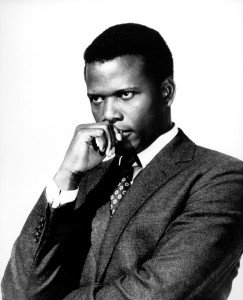
An iconic image of Sidney Poitier.
Paradise Island (Hog Island)
While only five miles long and a mile wide, Paradise Island is considered the most spectacular island in all of The Bahamas. Its story is just as interesting as that of The Bahamas.
It had a rather uninspiring name – Hog Island – but was transformed by a visionary Swedish industrialist Axel Wenner-Gren who made Electrolux a household name by assembling and selling domestic vacuum cleaners and refrigerators in the early 1930s. He later envisioned a monorail system for Los Angeles and created an early computer to compete with IBM.
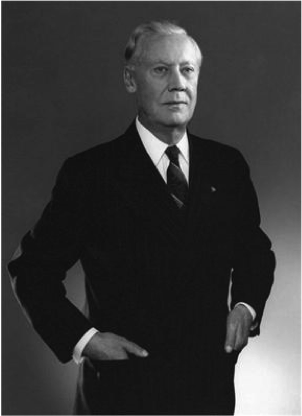
Axel Wenner-Gren (5 June 1881 – 24 November 1961)
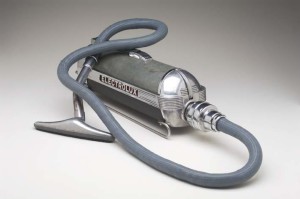
Early Electrolux vacuum cleaner
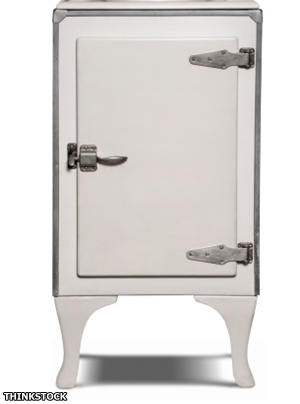
Electrolux fridge still working after 77 years without any repairs.
Wenner-Gren, on a world cruise on the most luxurious yacht at the time, the Southern Cross (previously called Rover), which he had purchased from Howard Hughes, was on his way to the Bahamas at the beginning of World War II in 1939, when they responded to an SOS from the SS ATHENIA, saving the lives of over 300 victims after a U-Boat torpedoed the Allied civilian transport ship.
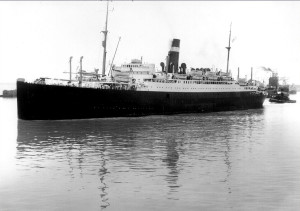
The SS Athenia
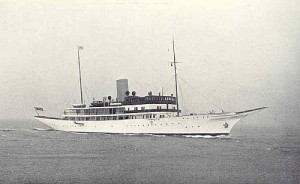
The Southern Cross
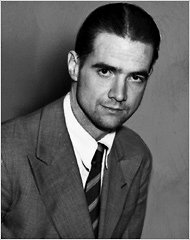
Howard Hughs 1936 New York Times
When Wenner-Gren later arrived in the Bahamas and anchored off Hog Island, he was struck by its beauty. For the next 20 years he developed the island as his private paradise which he named Shangri-La. He oversaw the creation of landscaped gardens inspired by those at the Chateau de Versailles.
He became good friends with the Duke (Edward VIII) and Duchess of Windsor (American divorcée Wallis Simpson). The Duke had been banished to the Bahamas as the Governor in August 1940, soon after his abdication of the British throne. He had a very small allowance for governing the Bahamas, and was not very happy with the post, considering the islands to be “a third class British Colony”. The couple’s friendship with Wenner-Gren was not to the liking of the British Foreign Office as Wenner-Gren was suspected to be a friend of Hermann Göring and a Nazi sympathiser. This is despite his rescuing the passengers aboard the Allied vessel SS Athenia which had been torpedoed by a German U-boat in 1939 (see above).
Although he was praised at the time for his efforts to combat poverty on the islands, the Duke was portrayed in a 1991 biography by Philip Ziegler, as contemptuous of the Bahamians and other non-white peoples of the Empire. He was praised for his handling of the civil unrest over low wages in Nassau in June 1942, that resulted in a “full-scale riot.” Ziegler wrote that the Duke blamed the trouble on “mischief makers – communists” and “men of Central European Jewish descent, who had secured jobs as a pretext for obtaining a deferment of draft”. The Duke resigned the post on 16 March 1945.
In 1962, Wenner-Gren sold his Shangri-La to George Huntington Hartford II,
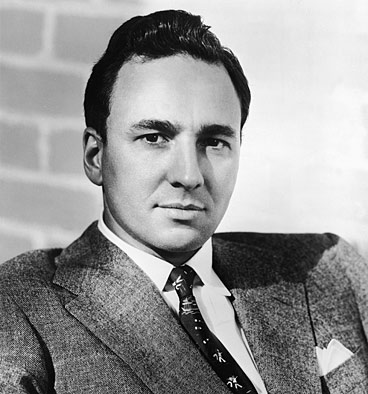
Huntington Hartford, the heir to the A&P grocery chain, who was also legendary for a series of business flops. Hartford was perceived as playing on the same field as the DuPonts, Rockefellers and Mellons.
heir to the Great Atlantic and Pacific (A&P) Tea Company fortune. After the sale, Wenner-Gren bought a large home “Villa Capulet” on the island of New Providence, and lived there whenever he was in Nassau until his death.
Hartford saw the commercial potential of an exclusive resort being developed there, and successfully petitioned the Bahamian government to rename Hog island to Paradise island. There he built the original Ocean Club, a luxurious 52-room hotel with an 18-hole golf course.
Hartford spent almost $10 million on the Ocean Club, adding terraced gardens, fountains, bronze and marble statuary imported from Europe, including two of Empress Josephine reclining at the garden’s entrance, a 14th-century Greek statue of Hercules and larger than life bronze statues of Franklin D. Roosevelt and David Livingston. A 12th-century Augustinian cloister, was disassembled and shipped piece-by-piece from France (Another version of the story is he got the pieces from a Florida warehouse belonging to William Randolph Hearst). The pieces arrived with no indication as to how they were to be reassembled, so it took a year to figure the sequence out and rebuild the cloister.
Hartford was not making much money as the Ocean Club was always filled with friends and cronies as non-paying guests. Because of the poor cash-flow, he sold the property in 1966 to the Mary Carter Paint Company, keeping a 25% interest and an active role in company affairs, mostly in the matters of aesthetics. The rise and fall of this company, later renamed Resorts International, Inc. is chronicled here, involving Merv Griffin and Donald Trump.
In 1994 Kerzner International (formerly called Sun International Resorts Ltd., which is owned by Sol Kerzner, the developer of Sun City Resort in South Africa) acquired the Ocean Club from Resorts International, Inc, and in 2000 did a massive upgrade and expansion costing $100 million. In 2003 they renamed the resort as the One&Only Ocean Club as part of Kerzner International’s growing collection of high-end resorts around the world including the One&Only Reethi Rah, Maldives, the One&Only Le Saint Géran, Mauritius, the One&Only Royal Mirage, Dubai, the One&Only Palmilla, Los Cabos, Mexico, the One&Only Cape Town in South Africa, One&Only Hayman Island, Australia, and the Emirates One&Only Wolgan Valley, Australia, with several more being developed.


